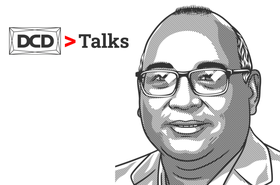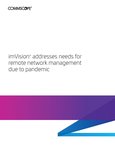I can’t speak for other R&D organizations, but CommScope R&D is in constant conversation with customers and partners.
Personally, this has always been a favorite part of my job. But conversations over the past few years, especially since the pandemic, have taken on a new level of urgency and intensity. Our discussions are wide-ranging, from IoT to optics.
We’re talking about impact in the short term and investments for the long term. Conversations aren’t just about technology, they’re grounded in business realities like speed to market and the user experience.
These conversations may be intense, but they’re also incredibly exciting. They feed CommScope R&D innovation. They’re forging even stronger relationships between CommScope and our customers and partners. Why? Because the stakes are so high, and openness and trust are critical to everyone’s success.
Everything is a balancing act
We use the word “balance” a lot in conversations. Architectural decisions require balancing considerations such as: where to run applications; how to get the capacity to handle data loads; ensuring the desired user experience; and generating revenue or saving money (or both).
These days, a common starting point for discussions is moving applications from the core to the Edge.
Let’s face it, we’re already beyond the ‘either-or/co-existence’ stage. At CommScope, we describe the core-Edge as a hybrid environment.
The core and Edge have a dynamic interdependence that poses loads of problems. But when CommScope solves some of those foundational problems, our customers reap benefits that simply weren’t possible when life was simpler and the core was king.
For example, customers need to push a lot of applications out to the Edge where latency becomes a major stumbling block.
Increasing capacity and speed in the physical layer would eliminate that obstacle – which would give our customers more flexibility in optimizing the delivery of applications.
Hop, skip and jump generations
Server and switch speeds are doubling almost every two years. It’s simply too fast a pace to absorb. So many customers are skipping over one or more generations.
When skipping generations becomes the new norm, it’s even more important that the infrastructure can support at least two or three generations into the future. CommScope’s high-speed migration portfolio is the result of conversations like this with our customers and R&D.
There’s another aspect of speed that’s important to a lot of our customers: speed to market. Many data centers are revenue generating.
In the past, it might take a couple of years to build a data center. The pandemic put intense pressure on data centers to move faster and adapt more quickly. Today, we’re having conversations about bringing data centers online in 90 days.
Preparing for the unknown
Customers have to keep up with applications and data demands, without knowing what the next applications will require. As soon as you bring machine learning, AI, and augmented and virtual reality into the conversation, the discussion turns to electronics.
Not surprisingly, media types are a big topic. There are lots of options in the evolution of electrical and optical switching. Serial circuits have evolved to parallel circuits that can incorporate four or eight fibers, and will soon double that capacity.
Customers want to understand all of these media choices, including costs, implementation and how far each will take them. Should a customer stay with what they know or transition to onboard optics? That conversation usually involves methodology choices, like ultra-low loss.
All of the solution sets that CommScope is servicing today will carry customers into 800G. Bandwidth beyond that will be serviced by a similar evolution.
Simplification
Everything I’ve talked about so far is about expanding capabilities. But customers have told us they want a balance of new capabilities and simplification.
The physical layer plays a critical role in how quickly and cost-effectively customers can actually implement changes. Innovations around simplification are just as important as the ones that improve speed, latency or capacity.
Both aggregation and disaggregation approaches are needed for simplification. Rack-level connections – as opposed to single-element connections – make changes faster and easier. CommScope R&D is also looking at different approaches to simplify the transition from direct-attach cables to active optical cables (AOCs) and fiber.
As I said at the outset, the conversations that CommScope R&D has with customers and partners are wide-ranging. Have I touched on the topics you care about? If not, let’s discuss it!
More from CommScope
-

DCD>Talks infrastructure optimization with Kamlesh Patel, Commscope
We sit down with Kamlesh Patel, head of Data Center Market Development at Commscope, about infrastructure dos and don'ts, and balancing cost with flexibility
-

imVision® addresses needs for remote network management due to pandemic
The pandemic has fundamentally altered the way we work, and this includes data centers. This whitepaper provides an alternative to staggering shifts by moving to remote strategies.
-

Sponsored Consider the move to 400Gb now - it’s closer than you think
Progress rarely comes without a cost and a fair bit of hassle, warns CommScope’s Ken Hall
